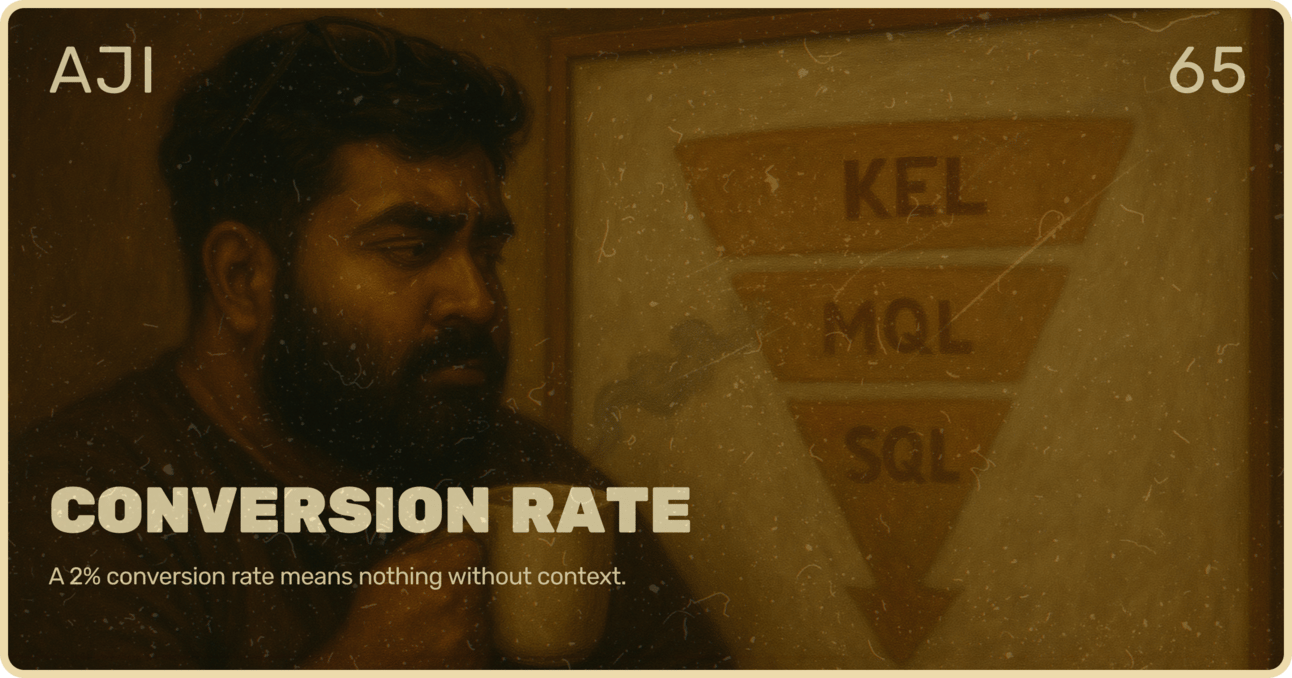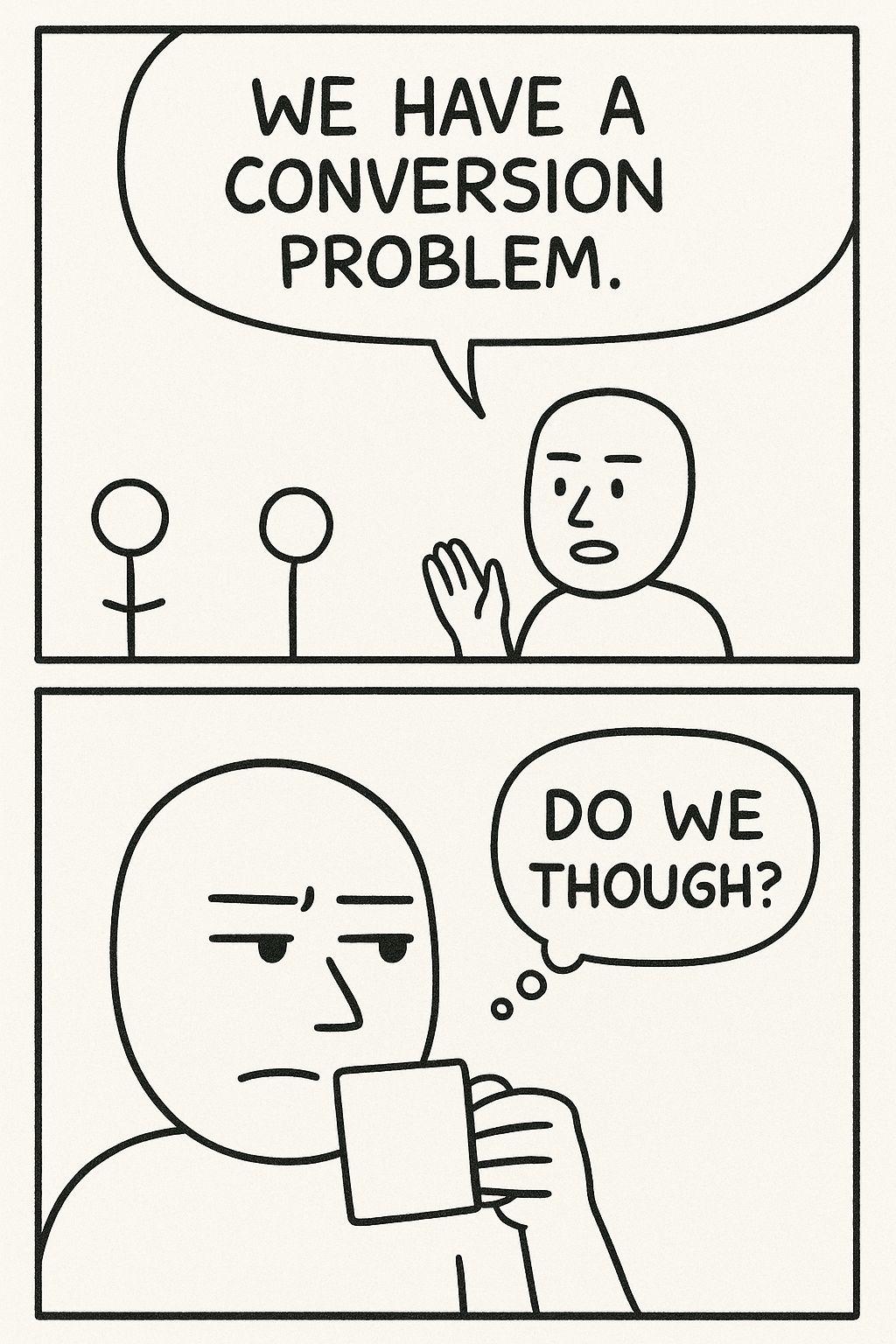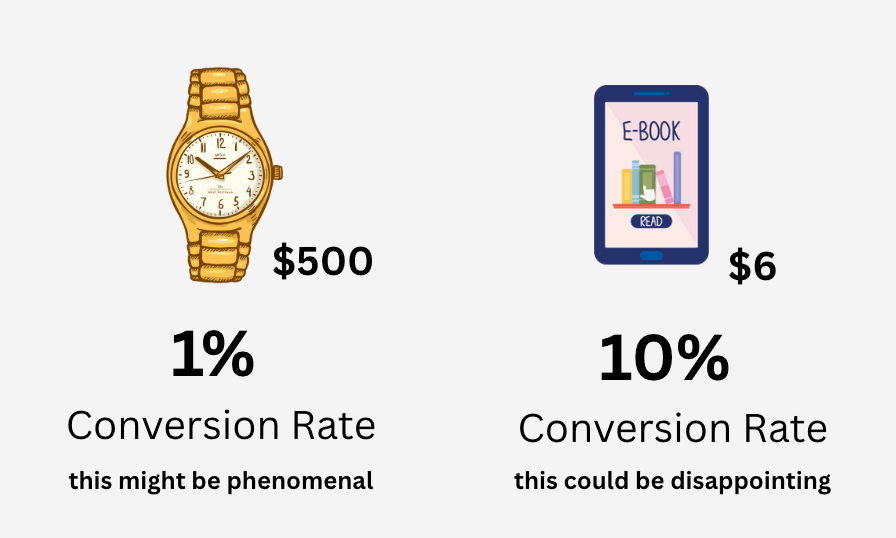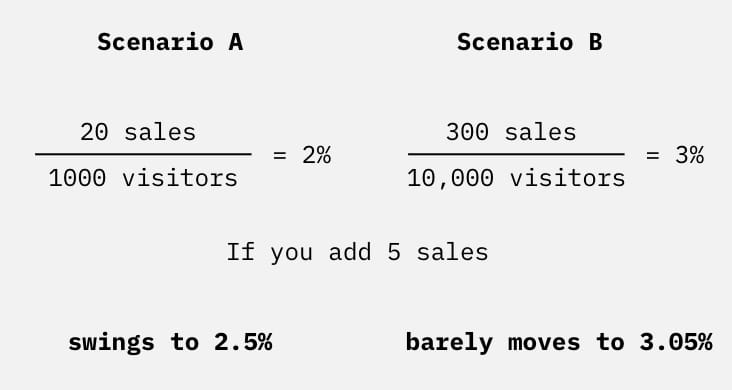- Ajay's Quest
- Posts
- Conversion Rate
Conversion Rate
A 2% conversion rate means nothing without context.

 | I’ve heard this line from dozens—maybe hundreds—of companies I’ve advised on growth. And my response is usually the same: What kind of conversion problem? Because “conversion rate” sounds like a neat, tidy metric. But it’s slippery. Context-dependent. Easily misinterpreted. |
Here are some common traps people fall into when diagnosing a conversion issue:
“Good” Conversion Rate Is a Myth
There’s no universal benchmark—context is everything.

It depends on your product, your price point, traffic quality, funnel structure, and market dynamics. Comparing conversion rates across businesses is like comparing batting averages between baseball and cricket. Wrong sport.
Relative Numbers Without Volume Are Meaningless
“I have a 2% conversion rate!” → Alright—but 2% of what?
If you’re getting 1,000 visitors a month, that’s 20 sales. Not exactly a statistically sound foundation to start making sweeping conclusions. You might just be reacting to noise.
So when should you actually start caring about your conversion rate?
Forget the fancy math for a second. (I studied physics too, so this hurts me to say.) Just use this framework:
“If adding a few extra sales changes the percentage a lot—don’t trust the number yet.”
Let’s play it out:

Basically, if you add a few sales and the number swings around wildly then you probably don’t have enough volume to use the number effectively.
If you aren’t there yet - focus on getting more traffic. Build the top of the funnel. Let the data breathe.
It Might Not Be a Conversion Issue at All
Before you start redesigning your website, zoom out.
Conversion rate is just one step in a much bigger funnel. If you’re only looking there, you might be fixing the wrong thing.
Say your website converts at 2%. Not great? Maybe. But what if your ad click-through rate is 0.3%?

Potential Funnel
That’s your real bottleneck.
You don’t have a conversion issue—you have a traffic quality or messaging issue. The wrong people are arriving, or they’re arriving with the wrong expectations.
The funnel works like a system. Diagnose it like one.
Don’t jump to treat the symptom. Find the choke point.
Final Thoughts
This has been top of mind as we plan our Q3 growth experiments at Superpower. Conversion rate chat always sneaks into the room—but now I’ve got my filters on.
I’ll keep you posted on what works, what flops, and what ends up in the “well… that was educational” pile.
Until next time,
Ajay